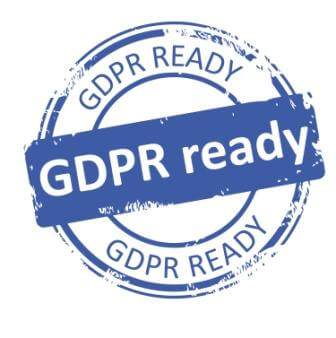The European General Data Protection Regulation (GDPR), which will be in full force in May 2018, promises to profoundly impact global organizations, requiring the overhaul of their data audit and information governance processes. The GDPR requires that an organization have absolute knowledge of where all EU personal data is stored across the enterprise, and be able to remove it when required.
 GDPR’s potentially significant penalties, which can be up to 4% of total global revenues or 20 million euro (whichever is greater), clearly have teeth and are intended to attain meaningful compliance. However, The CXP Group, a leading IT research firm notes in an industry report that, “compliance with GDPR will only be legally (effectuated) if an organization is able to identify exactly where data is.”
GDPR’s potentially significant penalties, which can be up to 4% of total global revenues or 20 million euro (whichever is greater), clearly have teeth and are intended to attain meaningful compliance. However, The CXP Group, a leading IT research firm notes in an industry report that, “compliance with GDPR will only be legally (effectuated) if an organization is able to identify exactly where data is.”
Under the GDPR, a European resident can request — effectively on a whim — that all data an enterprise holds on them be identified and also be removed. Organizations will be required to establish a capability to respond to such requests. Actual demonstrated compliance will require the ability to search across all data sources in the enterprise for data, including distributed unstructured data located on desktops and file servers.
The GDPR specifies processes and capabilities organizations must have in place to ensure the personal data of EU residents is secure, accessible, and can be identified upon request. Its articles and principles set out several obligations organizations will need to address, including the points enumerated below. These requirements can only be complied with through an effective enterprise eDiscovery search capability:
- Data minimization: Enterprises should only collect and retain as little personal data on EU subjects as possible. Corporate privacy attorneys advising clients on GDPR and EU privacy shield compliance, note that unauthorized “data stashes” maintained by employees on their distributed unstructured data sources is a key problem, requiring companies to search all endpoints to identify information including European phone numbers, European email address domains and other personal identifiable information.
- Enforcement of Right to be forgotten: An individual’s personal data must be identified and deleted on request.
- Effective incident response: If there is a compromise of personal data, an organization must have the ability to perform enterprise-wide data searches to determine and report on the extent of such breaches and resulting data compromise within seventy-two (72) hours.
- Accountability: Log and provide audit trails for all personal data identification requests and remedial actions.
- Enterprise-wide data audit: Identify the presence of personal data in all data locations and delete unneeded copies of personal data.
A mandatory aspect of GDPR compliance is the ability to demonstrate and prove that personal data is being protected, requiring information governance capabilities that allow companies to efficiently produce the documentation and other information necessary to respond to auditors’ requests. Many consultants and other advisors are helping companies establish GDPR compliance programs, and are documenting policies and procedures that are being put in place.
However, while policies, procedures and documentation are important, such GDPR compliance programs are ultimately hollow without consistent, operational execution and enforcement. CIOs and legal and compliance executives often aspire to implement information governance programs like defensible deletion and data audits to detect risks and remediate non-compliance. However, without an actual and scalable technology platform to effectuate these goals, those aspirations remain just that. For instance, recent IDG research suggests that approximately 70% of information stored by companies is “dark data” that is in the form of unstructured, distributed data that can pose significant legal and operational risks.
To achieve GDPR compliance and also EU data shield certification, organizations must ensure that explicit policies and procedures are in place for handling personal information, and just as importantly, the ability to prove that those policies and procedures are being followed and operationally enforced. What has always been needed is gaining immediate visibility into unstructured distributed data across the enterprise, through the ability to search and report across several thousand endpoints and other unstructured data sources, and return results within minutes instead of days or weeks. The need for such an operational capability is further heighted by the urgency of GDPR compliance.
X1 Distributed Discovery (X1DD) represents a unique approach, by enabling enterprises to quickly and easily search across multiple distributed endpoints and data servers from a central location. Legal and compliance teams can easily perform unified complex searches across both unstructured content and metadata, obtaining statistical insight into the data in minutes, instead of days or weeks. With X1DD, organizations can also automatically migrate, collect, delete, or take other action on the data as a result of the search parameters. Built on our award-winning and patented X1 Search technology, X1DD is the first product to offer true and massively scalable distributed searching that is executed in its entirety on the end-node computers for data audits across an organization. This game-changing capability vastly reduces costs while greatly mitigating risk and disruption to operations.
X1DD operates on-demand where your data currently resides — on desktops, laptops, servers, or even the Cloud — without disruption to business operations and without requiring extensive or complex hardware configurations. Beyond enterprise eDiscovery, GDPR and other information governance compliance functionality, X1DD includes the award-winning X1 Search, improving employee productivity while effectuating that all too illusive actual compliance with information governance programs, including GDPR.
